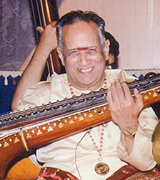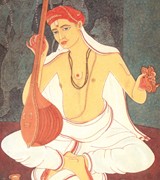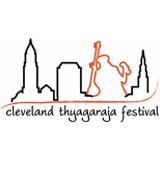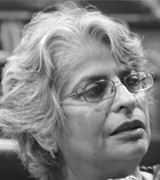COVER STORY
RAMAIAH VISWESWARAN
SRILATHA KRISHNA

Prof. R. Visweswaran, the eminent vainika-singer-composer-musicologist-teacher, is as ageless as the music he worships. We meet on a beautiful Sunday for an interview at his residence in Mysore. A compulsive explorer of the depths and vistas of Carnatic music, the 86-year-old maestro, is surrounded by objects of beauty. A vibrant bronze of Saraswati—the guiding light for his music—occupies centrestage in his drawing room. A stunning, dark-hued veena with an upturned tailpiece of a yali, another veena here, a tambura there, beautiful framed paintings crafted by his wife, and many awards clustered on various tables along the wall, complete the scene. It is the perfect setting to elicit his views on music, moksha and everything in between.
The singing veena
Visweswaran’s veena is one of a kind. Custom-made by the great veena-maker Rudrappa, it has a 16-inch kudam instead of the usual 12-inch, the suraikkai a burnished gold and the finish superlative. The proud owner manages to extract both the striking and the delicate notes from it. This veena has faithfully accompanied him all over the world. It is but natural to wonder about its role in executing his vision for music.
COVER STORY
Tyagaraja 250: His art and craft
PAPPU VENUGOPALA RAO

Tyagaraja, The period 1750-1850 was a golden era in world music, when some of the greatest musician-composers lived and enriched the field. In Europe, Beethoven, Mozart, Mendelssohn, Schumann and others lived during this period and created the symphony repertoire. It is a significant coincidence that the Carnatic Music trinity—Tyagaraja (1767-1847), Muthuswami Dikshitar (1776-1835) and Syama Sastry (1762-1827)—lived in a single area in Tanjore District during the same period.
As a tribute to Tyagaraja as we celebrate his 250th birth anniversary, we explore Tyagaraja’s compositions, his contribution to Carnatic music, his lyrics from the point of view of literature, prosody and poetics, his creation and craftsmanship of ragas and his devotion to Rama.
MAIN FEATURE
CLEVELAND TYAGARAJA FESTIVAL
SHANKAR RAMACHANDRAN

Cleveland, Ohio, was once the fifth largest city in the United States. It is known for many things including being the home of the Rockefellers’ Standard Oil empire, the home of a wonderful symphony orchestra and the city with the Rock and Roll Hall of Fame. It is home to Case Western Reserve University as well as the Cleveland Museum of Art with its treasured collection of sculptures and paintings from India. The South Asia collection includes bronzes from the first century BC, the age of the Satavahanas. All this and more is in Cleveland Ohio. But for south Indians during Easter week, this city is about the Cleveland Tyagaraja Aradhana, which celebrated it fortieth year in the city this April.
By every measure of size the festival is big. Some 200 artists from India converge here to perform, teach and judge the music and dance competitions in which hundreds of children participate. Orchestral groups with participants numbering in the hundreds, sing and perform together. Everything about the festival is bigger than life. Twelve consecutive days (12-23 April this year) of performances and competitions run simultaneously. Over a hundred concerts and dance programmes are staged.
THEATRE
Reflections on the Indian stage
MAHESH ELKUNCHWAR

ANURADHA KAPUR is a well known theatre director and teacher. She was educated at Delhi University and later at Leeds University, England, where she was awarded her Ph.D. Most of her theatre work is in collaboration with visual arts, architects, and scenographers, and has travelled widely nationally and internationally. Her significant productions include Gora,Umrao,Sundari, No Boat in Sight—a performance with Japanese and Indian artists co-directed with Makato Sato—and Bertolt Brecht’s Antigone Project co-directed with Ein Lall. Apart from these, Vijay Tendulkar’s Gidhade and Baby assembled as a text together and called Pata Shahar Mumbai, Heiner Mueller’s Centaurs, Henrik Ibsen’s John Gabriel Borkman and recently, Mahesh Elkunchwar’s Virasat, are her other critically acclaimed work.
She won the Sangeet Natak Akademi Puraskar in 2004 for Direction. She completed her term as Director, National School of Drama (NSD), in 2013 where she was also Professor of Acting and Direction. At present, she is Visiting Professor at Ambedkar University, Delhi, and engaged with curating theatre festivals, teaching and directing in India and abroad—among other places, in Hyderabad, Warwick and Cape Town.


